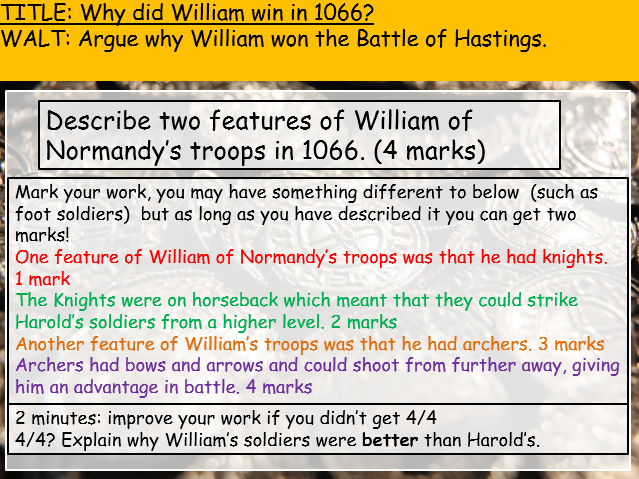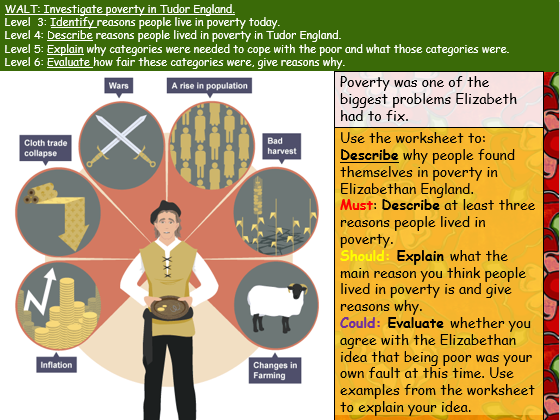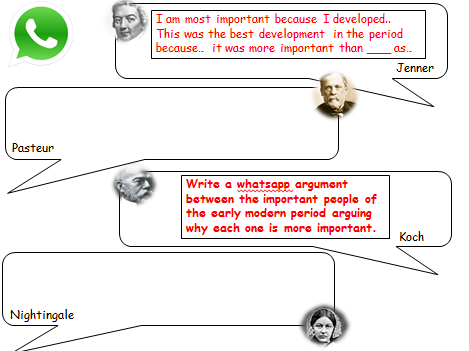
177Uploads
68k+Views
22k+Downloads
All resources

Votes for Women! Suffragists and Suffragette’s interpretation lesson
stand alone lesson to celebrate the centenary of votes for women and to provide pupils with an overview of the subject.
Pupils describe the two groups (suffragists and suffragettes) and will gain an understanding of the words militant and moderate. Pupils will also be able to explain why women were not allowed the vote and eventually gained the vote following WW1.
Skills building section develops pupils ability to analyse interpretations.

Norman Conquest (Edexcel history 9-1) Why did William win the Battle of Hastings?
Fully differentiated lesson with 'how far do you agree' exam question and skills work at the end of the lesson.
Pupils colour code the reasons William/Harold's tactics were better, they then analyse their leadership before considering whether it was luck/God's will that led to William winning the Battle of Hasting's.

Wounded Knee and Ghost Dance (American West (Edexcel history 9-1))
Whole lesson covers the ghost dance and the massacre at wounded knee.
Lesson fully differentiated with the opportunity for discussion as to why the Ghost dance would terrify white settlers and how they reacted to the massacre.

Titanic - who was to blame?
Group lesson, pupils work in groups to analyse sources which help them decide who was to blame for the disaster - they annotate each source before moving onto the next.
At the end of the lesson pupils are asked to evaluate who was most to blame, this task is levelled with different tasks for each attainment level.

REVISION Treaty of Versailles and Weimar (Edexcel 9-1 Weimar and Nazi Germany)
Part of a series of revision lessons in which pupils prepare for their final examination for Paper Three Weimar and Nazi Germany as part of the 2016 Edexcel specification.
Pupils will:
WALT: Revise the Treaty of Versailles and problems with the Weimar government.
Grade 3: Identify the terms of the Treaty of Versailles and describe how the Germans felt about it.
Grade 5: Describe the strengths and weaknesses of the Weimar constitution.
Grade 7: Explain why the government was unpopular and who opposed it.
Grade 9: Evaluate whether Hyperinflation was positive or negative for the people of Germany.
Bundle

Early Elizabethan England Revision Bundle inc. Mock (Edexcel 9-1)
This revision bundle covers the content required to revise Paper Two of Early Elizabethan England (Edexcel 9-1).
Sessions included in this bundle:
Key people (Elizabeth, Walsingham, Mary QoS)
Life and problems (poverty, education, entertainment)
Plots against Elizabeth (Ridolfi, Babington, Throckmorton, Northern Earls, Armada)
Exploration (Drake and Raleigh with exam practice)
Full mock also included
Bundle

American West Revision Bundle (designed for Edexcel 9-1)
7 revision sessions focused around building skills towards the new GCSE content - narrative account, importance and consequences.

Elizabethan England: Mary Queen of Scots
Two fully differentiated lessons aimed at KS3 exploring the problems Mary caused Elizabeth and whether she should have executed her.

Anglo-Saxon Local Govenment (Anglo-Saxon and Norman England (Edexcel 9-1))
WALT: Examine the government of Saxon England at a local level.
2-3: Identify and define key words.
4-5: Describe the role of the Shire Reeve.
6-7: Explain how the legal system works in Anglo Saxon England.
8-9*: Evaluate the impact of collective responsibility.

Elizabethan England: Poverty and the Poor Laws
WALT: Investigate poverty in Tudor England.
Level 3: Identify reasons people live in poverty today.
Level 4: Describe reasons people lived in poverty in Tudor England.
Level 5: Explain why categories were needed to cope with the poor and what those categories were.
Level 6: Evaluate how fair these categories were, give reasons why.

The Rising Against Tostig Godwinson (Anglo-Saxon and Norman England (Edexcel 9-1))
WALT: Evaluate the reasons and response to the rebellion against Tostig.
2-3: Recall key facts about the role of an earl.
4-5: Describe reasons Saxons did not like Tostig.
6-7: Explain why factors would make somebody rebel.
8-9*: evaluate whether Harold was right to exile his brother.
Pupils will recall the roles of an earl for the starter.
They will then go through each of the reasons the Saxons hated Tostig (printable handout that pupils highlight and annotate)
They write a letter to Harold (LA) or a response from Harold (HA) explaining why they are upset/ how they are going to offer help
They analyse the impact this had upon Harold’s claim and whether he was right to exile his brother.

SKILLS BUILDER! Explain the importance (Edexcel 9-1: The American West)
WALT: explore the key skills needed to reach full marks on an ‘importance of’ question.
Recall prior knowledge from the Norman unit.
Describe the assessment objectives and mark scheme.
Analyse and criticise an example answer.
Apply my understanding to an exam question to demonstrate my knowledge.
This lesson has been created to build students confidence with using and applying assessment objectives to their learning - i have found that through using skills builders students grow in confidence and full marks seems more attainable.
Students annotate the mark scheme and an example answer before applying their knowledge to a new question and marking their peers work to demonstrate further undertstanding.
The starter activity recalls prior knowledge of the Normans topic, however the task from slide 11 could easily be moved to the starter if you do not teach this topic/ have not taught it prior to this lesson.

Slave Trade Triangle
Lesson surrounding the Triangular Trade, animation included.
Differentiated worksheet- comic book strip with gapfill for LA, titles for MA and can be provided empty for HA.
Aims:
Identify key stages of the triangular trade
Explain why the slave trade was so profitable
Compare which part of the triangular trade was most profitable.

What is Slavery? Introduction
What is slavery?
Comparison activity of slavery - Egyptian, Medieval, Empirical and Modern
Source analysis
Level 3-6 (NC) differentiation
Homework activity - pupils to research the four periods and draw a picture to represent slavery during that time period.

Gate Fulford 1066 (full lesson with animated battle strategy)
Full lesson aimed at KS3 examining that battle of Gate Fulford.
WALT: Examine the events of Gate Fulford.
WILF 1: Identify key things that happened at Gate Fulford. L3.
WILF 2: Describe what happened at Gate Fulford. L4.
WILF 3: Explain why Edwin and Morcar lost the Battle of Gate Fulford. L5.
Fully animated battle strategy.
Discusses Tostig, Hardrada, Edwin and Morcar - lesson has been aimed at preparing KS3 to study Normans at KS4 through the Edexcel examination board.
Differentiation and worksheets as hidden slides within the powerpoint

Introduction to WW1 - distribution of power in 1914
Pupils evaluate the power of each country by analysing whether they have an army, money, empire and any other relevant information.
They then argue why they think their country is the most powerful and get into a ‘living line’ from most to least powerful. They must then defend their decision.
Leads into a lesson regarding long and short term causes of WW1 including the assassination of FF.

PSHCE British Values
PSHCE lesson that explores the Ofsted framework for British Values. Taught to year seven, fully differentiated with gap fills and challenge tasks.
Pupils create a poster at the end to be displayed in tutor rooms so that you can show that they understand what BV are.

Anglo-Saxon Rebellions 1068-71 (Edexcel History 9-1 Norman England)
Lesson explores: Rebellion of Edwin and Morcar, Rebellion of Edgar Aethling, Hereward the Wake.
Pupils work in groups of three to become experts about a topic before teaching each other, they then explore the outcomes of William’s actions before planning an exam answer to an explain why question.
WALT: Explain why and how people rebelled against William.
1-2: describe why Saxons were unhappy with William.
3-4: Describe events of the three rebellions between 1068-71.
5-7: Explain why the rebellions failed.
8-9: Evaluate the consequences of the rebellions.

American West Key Words
two age document with key words for the unit on it - in line with Edexcel 9-1.
I went through the Pearson textbook and included all of the key words from front to back of the textbook.

Early Modern Medicine (1700-1900) Revision Session
This session covers
Jenner, Pasteur, Koch, Nightingale, Cholera (Chadwick and Snow) And the Public Health Acts.




















